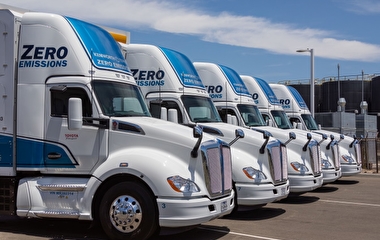
What’s next in the future of mobility? How about goods transported via a network of mobile warehouses, airborne fulfillment centers, and drones? In The Future of E-commerce, Professor Saif Benjaafar writes that efficiencies in logistics, coupled with new modes of delivery, are enabling customers to order nearly everything from anywhere—frequently, and in smaller quantities—with big implications for land use and transportation.
For example, companies are experimenting with mobile warehouses—networks of trucks used not only as delivery vehicles but also as sources of order fulfillment or as staging points for customer pickups. And Amazon has filed a patent for an “airborne fulfillment center,” a blimp-like airship from which drones fly back and forth to deliver packages below.
Among a range of recommendations, Benjaafar says policymakers may need to rethink zoning and permitting laws to allow for mobile stores, warehouses, and pick-up and drop-off points. Support for deploying dedicated lanes for driverless vehicles and robotic delivery devices, along with other access points for such devices, may also be needed.
The Future of Mobility series collects the perspectives of top U researchers and other national experts. Authors scan the horizon, reflect on critical transportation topics, and recommend action steps for public officials and policymakers.
—Pam Snopl, CTS senior editor


